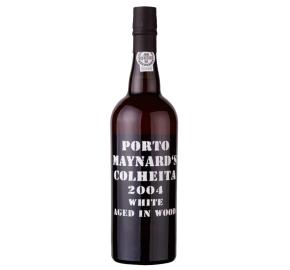Maynard's Colheita - White Port 2004
- Producer Vintage Port
-
Blend
Malvasia Fina
Vinosinho - Country Portugal
- Region Porto
- UPC 0 15643 49954 8
Log in to view pricing and order online
Don't have an account? Register here
Item# 97156-04/6PK
Tasting notes
Amber colour with golden border. This Single Harvest White presents a generous bouquet with notes of hazelnut, fruits and dried figs. In the mouth, superb and complex character, with aromas of peach jam and nuances of nuts and white chocolate. Complex and elegant finish. Pairs beautifully with desserts, especially dried fruit and egg-based cakes. It can also accompany hard cheeses such as Manchego and cheese from the island of S. Jorge. It is delicious if drunk on its own. After opened it can be kept for 4 to 5 weeks. Store bottle in a dark and cool place, with constant temperature.
It is a wine that ages for a long time in small wooden casks, surpassing the need for decanting. This is a natural phenomenon and occurs eventually, slowly and gradually over the years of ageing.
Estate
Maynard’s is the flagship brand of Fernando and Alvaro Van Zeller’s Vinihold’s company. Named after the first established English Port wine shipper in Oporto, the Maynard’s brand honors the story of the late Walter Maynard, born in 1652, an illustrious ancestor of the van Zeller family through his marriage to Dorothea Augusta Kopke, recorded as one of the first traders to ever export Port wine to England. The brand has a premium positioning evident in every detail, from the selection of wines to the final presentation of the product itself, particularities that make all the difference, the paradigm of a unique product with centuries of tradition.
Vinification
The harvest began in a particularly unfavourable climate, with a struggling domestic and global economical environment. Climatically-wise, water shortages were the main concern. The winter was extremely dry, having only rained about 1/3 of the quantity in the same season of the previous year. Lack of water during the first part of the growing season led to little pressure with vine diseases. The concern during July was mainly related to the vines' ability to ripen the grapes in such dry conditions. Grapes were hand picked, at their ideal state of ripeness, into 20kg crates and cooled down overnight in cold chambers. After pressing, the grapes were placed in stainless steel vats for alcoholic fermentation. At the end of fermentation, the wine was transferred to 600L casks where it aged until the perfect moment for bottling was decided.


